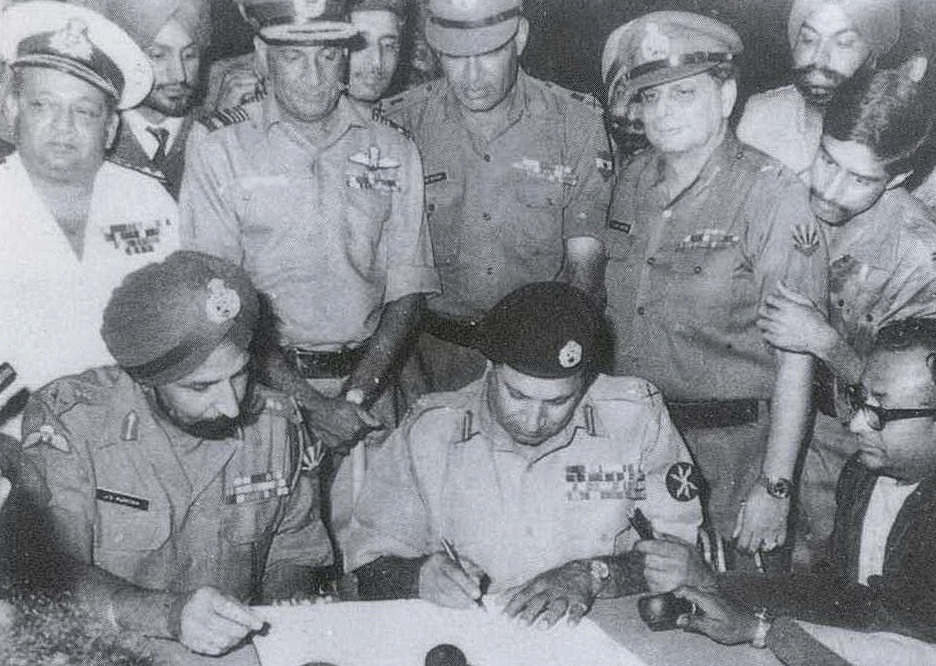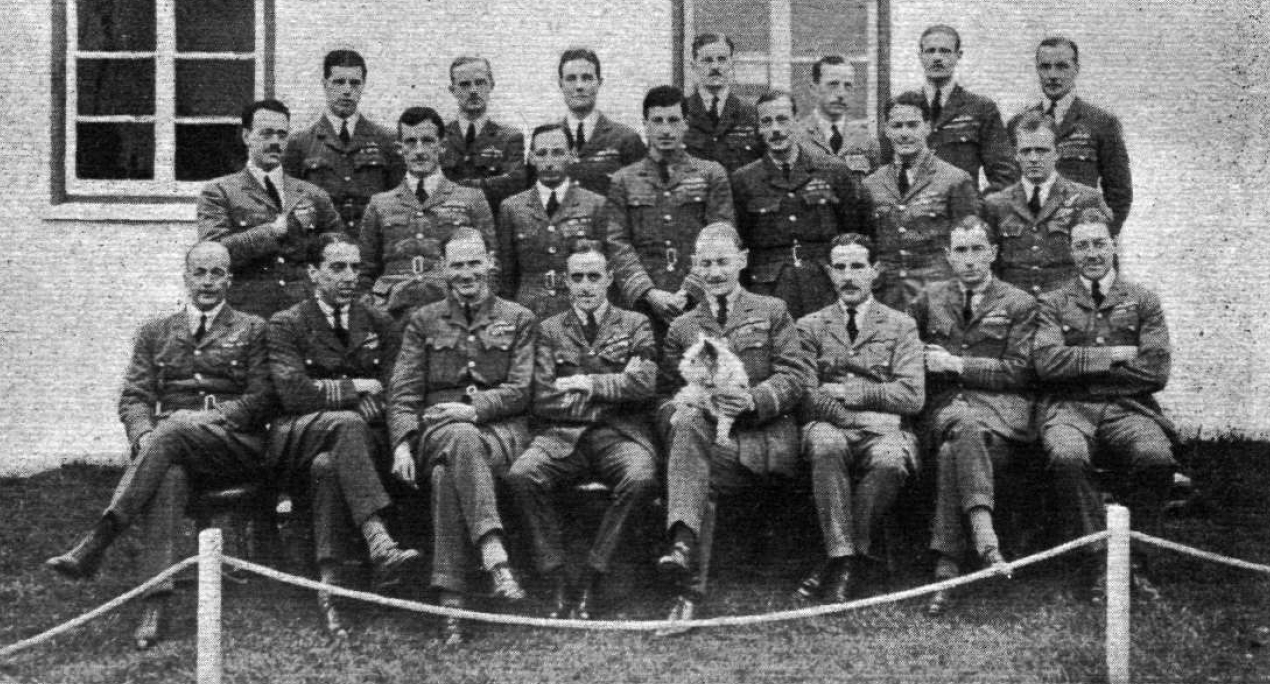|
Pratap Chandra Lal
Air Chief Marshal Pratap Chandra Lal, DFC (6 December 1916 – 13 August 1982) was the Chief of Air Staff (CAS) of the Indian Air Force during the Indo-Pakistan War of 1971. He served in the IAF from 1939 until his retirement in 1973. He was the CAS at the time of Operation Chengiz Khan, the preemptive strikes that were carried out by the Pakistan Air Force (PAF) that marked the formal initiation of hostilities of the Indo-Pakistani War of 1971. Slated to study law in England, Lal instead joined the Air Force Volunteer Reserve at the outbreak of World War II. After serving as a navigation instructor, he trained as a pilot and joined the No. 7 Squadron IAF. He later commanded this squadron during the Burma Campaign and mentioned in dispatches as well as awarded the Distinguished Flying Cross. In 1945, he was absorbed into the permanent cadre of the Indian Air Force (IAF). After the Partition of India in 1947, he served as the Director of Planning and Training at Air HQ. In ... [...More Info...] [...Related Items...] OR: [Wikipedia] [Google] [Baidu] |
Air Chief Marshal (India)
Air chief marshal is a four-star air officer rank in the Indian Air Force. It is the highest active rank in the Indian Air Force. Air chief marshal ranks above the three-star rank of air marshal and below the five-star rank of Marshal of the Indian Air Force, which is largely a war-time or ceremonial rank. The rank is held by the Chief of the Air Staff, the professional head of the Indian Air Force. The rank may also be held by the Chief of Defence Staff when the holder is a serving Indian Air Force officer. Rank holders The current and only air chief marshal in the Indian Armed Forces is the Chief of the Air Staff (CAS). The equivalent rank in the Indian Army is general and in the Indian Navy is admiral. History The Indian Air Force inherited the rank of air chief marshal from the RAF. While the RAF air officers in command of RAF India were normally of a lower rank, Sir Edgar Ludlow-Hewitt was promoted to the rank in 1937, towards the end of his tenure as Air Officer ... [...More Info...] [...Related Items...] OR: [Wikipedia] [Google] [Baidu] |
General Manager
A general manager (GM) is an executive who has overall responsibility for managing both the revenue and cost elements of a company's income statement, known as profit & loss (P&L) responsibility. A general manager usually oversees most or all of the firm's marketing and sales functions as well as the day-to-day operations of the business. Frequently, the general manager is responsible for effective planning, delegating, coordinating, staffing, organizing, and decision making to attain desirable profit making results for an organization (Sayles 1979). In many cases, the general manager of a business is given a different formal title or titles. Most corporate managers holding the titles of chief executive officer (CEO) or president, for example, are the general managers of their respective businesses. More rarely, the chief financial officer (CFO), chief operating officer (COO), or chief marketing officer (CMO) will act as the general manager of the business. Depending ... [...More Info...] [...Related Items...] OR: [Wikipedia] [Google] [Baidu] |
Indian Airlines Corporation
Indian Airlines was a division of Air India Limited. It was based in Delhi and focused primarily on domestic routes, along with several international services to neighbouring countries in Asia. It was a division of Air India Limited after merger of eight pre-Independence domestic airlines. On 10 December 2005, the airline was rebranded as Indian for advertising purposes as a part of a program to revamp its image in preparation for an initial public offering (IPO). The airline operated closely with Air India, India's national overseas carrier. Alliance Air was a fully owned subsidiary of Indian. In 2007, the Government of India announced that Indian Airlines would be merged into Air India Limited as its wholly owned subsidiary . As part of the merger process, a new company called the National Aviation Company of India Limited (now called Air India Limited) was established, into which both Air India (along with Air India Express) and Indian (along with Alliance Air) ... [...More Info...] [...Related Items...] OR: [Wikipedia] [Google] [Baidu] |
King Tribhuvan
Tribhuvan Bir Bikram Shah ( ne, श्री ५ महाराजाधिराज त्रिभुवन वीर विक्रम शाह देव ) (30 June 1906 – 13 March 1955) was King of Nepal from 11 December 1911 until his death. Born in Kathmandu, the capital city of Nepal, he ascended to the throne at the age of five, upon the death of his father, Prithvi Bir Bikram Shah, and was crowned on 20 February 1913 at the Nasal Chowk, Hanuman Dhoka Palace in Kathmandu, with his mother acting as regent. At the time of his crowning, the position of monarch was largely ceremonial, with the real governing power residing with the Rana family. Family Tribhuvan was born on 30 June 1906 to Prithvi Bir Bikram Shah and Divyeshwari Lakshmi Devi Shah. After the death of his father, Tribhuvan Bir Bikram Shah ascended the throne on 11 December 1911, at the age of five. Queen Mother Divyeshwari Lakshmi Devi was appointed the regent until Tribhuvan would come to his age. H ... [...More Info...] [...Related Items...] OR: [Wikipedia] [Google] [Baidu] |
RAF Staff College, Andover
The RAF Staff College at RAF Andover was the first Royal Air Force staff college to be established. Its role was the training of officers in the administrative, staff and policy aspects of air force matters. History Foundation Following the foundation of the RAF in April 1918 and the end of the First World War in November 1918, there was a determination to maintain the Air Force as an independent service rather than let the Army and Royal Navy control air operations again. Therefore, the creation of an RAF Staff College to parallel the Army Staff College and the Royal Naval Staff College was an important element in fully establishing the RAF. On 14 November 1921, Air Commodore Robert Brooke-Popham was tasked with setting up the RAF Staff College. On 1 April the following year, the new RAF Staff College came into being with Brooke-Popham as its first commandant. The Staff College was based at RAF Andover and was subordinate to Inland Area. The dog seen in the photograph ... [...More Info...] [...Related Items...] OR: [Wikipedia] [Google] [Baidu] |
Partition Of India
The Partition of British India in 1947 was the Partition (politics), change of political borders and the division of other assets that accompanied the dissolution of the British Raj in South Asia and the creation of two independent dominions: Dominion of India, India and Dominion of Pakistan, Pakistan. The Dominion of India is today the India, Republic of India, and the Dominion of Pakistan—which at the time comprised two regions lying on either side of India—is now the Pakistan, Islamic Republic of Pakistan and the Bangladesh, People's Republic of Bangladesh. The partition was outlined in the Indian Independence Act 1947. The change of political borders notably included the division of two provinces of British India, Bengal Presidency, Bengal and Punjab Province (British India), Punjab. The majority Muslim districts in these provinces were awarded to Pakistan and the majority non-Muslim to India. The other assets that were divided included the British Indian Army, ... [...More Info...] [...Related Items...] OR: [Wikipedia] [Google] [Baidu] |
Mentioned In Dispatches
To be mentioned in dispatches (or despatches, MiD) describes a member of the armed forces whose name appears in an official report written by a superior officer and sent to the high command, in which their gallant or meritorious action in the face of the enemy is described. In some countries, a service member's name must be mentioned in dispatches as a condition for receiving certain decorations. United Kingdom, British Empire, and Commonwealth of Nations Servicemen and women of the British Empire or the Commonwealth who are mentioned in despatches (MiD) are not awarded a medal for their actions, but receive a certificate and wear an oak leaf device on the ribbon of the appropriate campaign medal. A smaller version of the oak leaf device is attached to the ribbon when worn alone. Prior to 2014, only one device could be worn on a ribbon, irrespective of the number of times the recipient was mentioned in despatches. Where no campaign medal is awarded, the oak leaf is worn direc ... [...More Info...] [...Related Items...] OR: [Wikipedia] [Google] [Baidu] |
England
England is a country that is part of the United Kingdom. It shares land borders with Wales to its west and Scotland to its north. The Irish Sea lies northwest and the Celtic Sea to the southwest. It is separated from continental Europe by the North Sea to the east and the English Channel to the south. The country covers five-eighths of the island of Great Britain, which lies in the North Atlantic, and includes over 100 smaller islands, such as the Isles of Scilly and the Isle of Wight. The area now called England was first inhabited by modern humans during the Upper Paleolithic period, but takes its name from the Angles, a Germanic tribe deriving its name from the Anglia peninsula, who settled during the 5th and 6th centuries. England became a unified state in the 10th century and has had a significant cultural and legal impact on the wider world since the Age of Discovery, which began during the 15th century. The English language, the Anglican Church, and Eng ... [...More Info...] [...Related Items...] OR: [Wikipedia] [Google] [Baidu] |
Pakistan Air Force
, "Be it deserts or seas; all lie under our wings" (traditional) , colours = , colours_label = , march = , mascot = , anniversaries = Air Force Day: 7 September , equipment = , equipment_label = , battles = , decorations = , battle_honours = , battle_honours_label = , flying_hours = , website paf.gov.pk, commander1 = President Arif Alvi , commander1_label = Commander-in-Chief , commander2 = General Sahir Shamshad Mirza , commander2_label = Chairman Joint Chiefs of Staff , commander3 = Air Chief Marshal Zaheer Ahmad Babar , commander3_label = Chief of Air Staff , commander4 = Air Marshal Syed ... [...More Info...] [...Related Items...] OR: [Wikipedia] [Google] [Baidu] |
Operation Chengiz Khan
Operation Chengiz Khan was the code name assigned to the preemptive strikes carried out by the Pakistani Air Force (PAF) on the forward airbases and radar installations of the Indian Air Force (IAF) on the evening of 3 December 1971, and marked the formal initiation of hostilities of the Indo-Pakistani War of 1971. The operation targeted 11 of India's airfields and also included artillery strikes on Indian positions in Kashmir. The targets were the Indian Airbases of Amritsar, Ambala, Agra, Awantipur, Bikaner, Halwara, Jodhpur, Jaisalmer, Pathankot, Bhuj, Srinagar and Uttarlai and air defence radars at Amritsar and Faridkot. Notwithstanding the multiplicity of targets, the Pakistani air strikes were ineffectual and failed to inflict any material damage to the IAF air fields, only cratering the runways at Amritsar and destroying a radar station. The PAF reportedly lost four aircraft during the raid. In an address to the nation on radio that same evening, then Indian Prime Min ... [...More Info...] [...Related Items...] OR: [Wikipedia] [Google] [Baidu] |


_(restoration).jpg)


_Oak_Leaf_Cluster.jpg)
